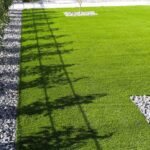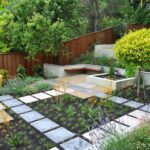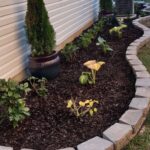1. One of the biggest challenges for homeowners when it comes to landscaping is finding the time and energy to maintain a lush and beautiful garden. Luckily, there are plenty of low maintenance landscape ideas that can help you create a stunning outdoor space without requiring a lot of upkeep. One popular option is to plant native plants that are well-suited to your climate and soil conditions. These plants are often more resistant to pests and diseases, meaning you’ll spend less time and money on treatments.
2. Another low maintenance landscaping idea is to incorporate hardscaping elements into your design. This can include building a patio or walkway using materials like gravel, stone, or pavers. Hardscaping not only reduces the amount of lawn that needs mowing but also adds structure and visual interest to your outdoor space. You can also add low-maintenance features like rock gardens, water features, or raised beds that require minimal upkeep once they’re established.
3. Mulch is an essential tool for maintaining a low maintenance landscape. Not only does it help retain moisture in the soil and suppress weeds, but it also adds visual appeal to your garden beds. Consider using organic mulch like wood chips, straw, or shredded bark, which will break down over time and help improve soil quality. Mulching your beds once or twice a year can significantly reduce the need for weeding and watering.
4. To further reduce maintenance, consider creating a xeriscape garden that requires minimal water and upkeep. Xeriscaping involves using drought-tolerant plants, efficient irrigation systems, and mulch to create a sustainable and low maintenance landscape. By choosing plants that are well-suited to your climate and grouping them together based on their water needs, you can create a beautiful garden that thrives with minimal care. Plus, xeriscaping can help you save money on water bills and reduce your environmental impact.
5. When planning your low maintenance landscape, think about the long-term maintenance requirements of different plants and materials. Avoid planting species that are prone to diseases, pests, or aggressive spreading, as they can quickly become a headache to control. Instead, opt for slow-growing plants that require minimal pruning and deadheading. Consider using perennial plants that come back year after year, reducing the need for replanting and maintenance.
6. Finally, don’t forget to design your landscape with maintenance in mind. Consider grouping plants together based on their maintenance needs, so you can easily address tasks like watering, fertilizing, and pruning in one area. Invest in high-quality tools and equipment that make maintenance tasks easier and more efficient. And don’t be afraid to ask for help from landscaping professionals if you need assistance with tasks like fertilizing, pest control, or irrigation. With a little planning and creativity, you can create a low maintenance landscape that looks beautiful year-round with minimal effort.
















